This feature assists in debugging workflows and processes. Debugging workflows—whether in software development, project management, or other fields—involves systematically identifying and fixing issues that arise during execution. Here are the steps you can follow to troubleshoot these processes effectively.
You can watch the video here to learn more.
Utilize debugging tools: Apply tools and techniques suitable for your workflow environment, including the visual debugging features offered by the FlowWright application.
Inspect State and Variables: Monitor the status of variables and data at different points in the workflow. This can help detect unexpected changes or inconsistencies that might be causing the problem.
Isolate the Issue: Focus the problem's scope to find its root cause. This might involve systematically disabling or isolating parts of the workflow to identify which component is causing the issue.
How to start debugging?
There are two methods to begin debugging.
(1) Select an existing process definition from the table and click on the Actions - Debug menu option.

(2) Select an existing process definition from the table and double-click to open the designer page. Then, click on the Actions - Debug menu option.
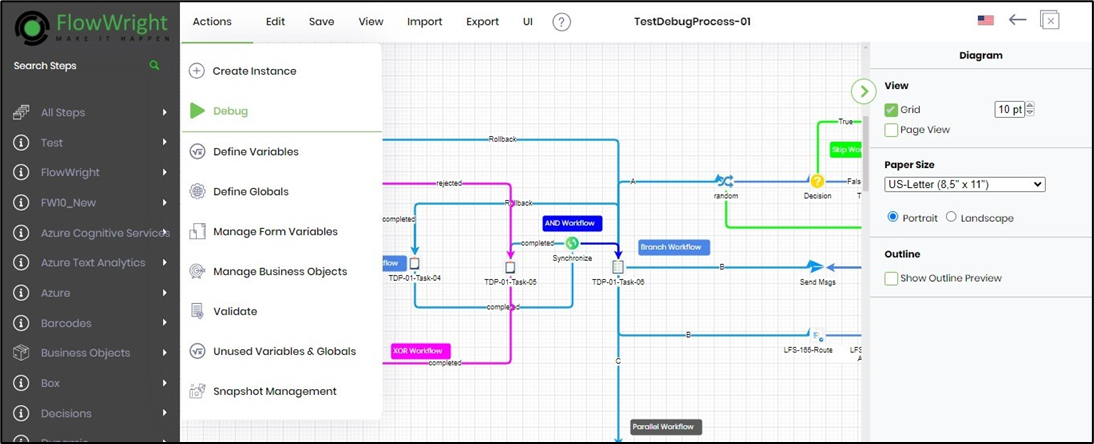
Below, a debug popup window displays. You may provide the values for the variables or globals here. Click on the Start Debug button to initiate the debugging process.
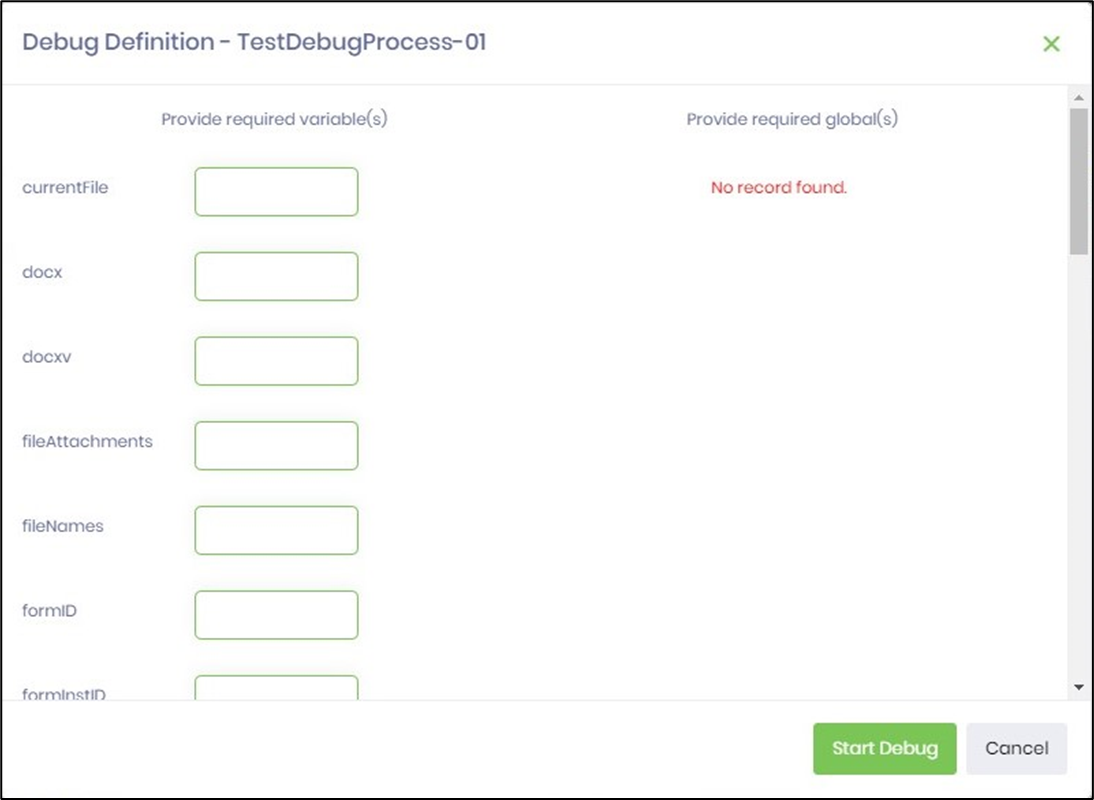
A new process instance is created in the background with the status “Debugging,” as shown below.

How do you understand the Visual Debugger UI?
The Visual Debugger UI appears as shown. The process workflow is centered, with a green rectangle around it indicating the current step. The Statistics window, located in the right pane, displays information such as the created date and last modified date. It includes counts for process steps, connections, variables, globals, business objects, form variables, comments, snapshots, definition comments, instances, and definition culture. Use the Next button to move to the next step in the workflow. Use the Stop button to terminate the debugger. Use the Run All button to execute all process steps and automatically navigate to the breakpoint. Click the (X) button in the top-right corner to close and exit the debugger. The left arrow (←) button opens the process definition page in a new tab.
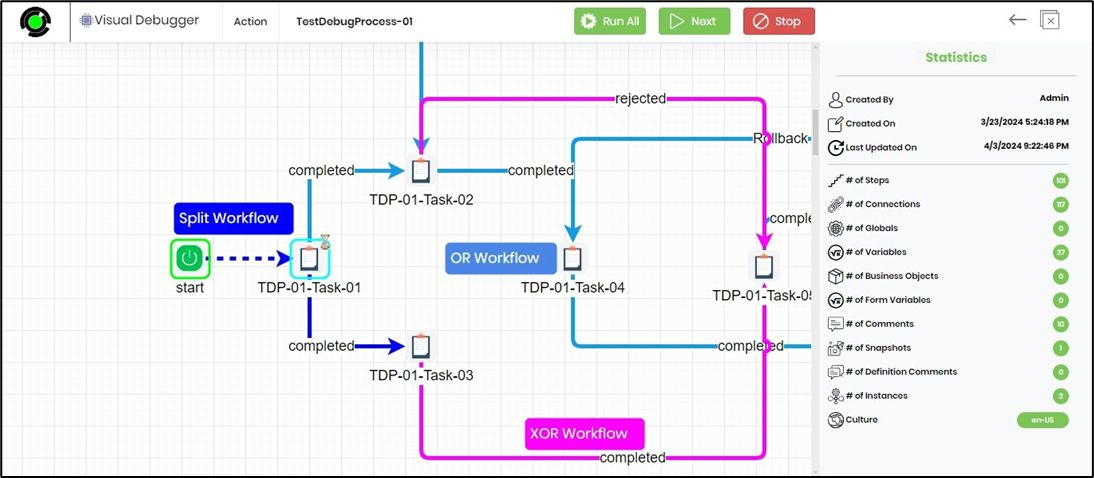
To examine the step output during execution, select a process step to view its details in the right pane. Below is a list of variables (both system and process) and their current values.
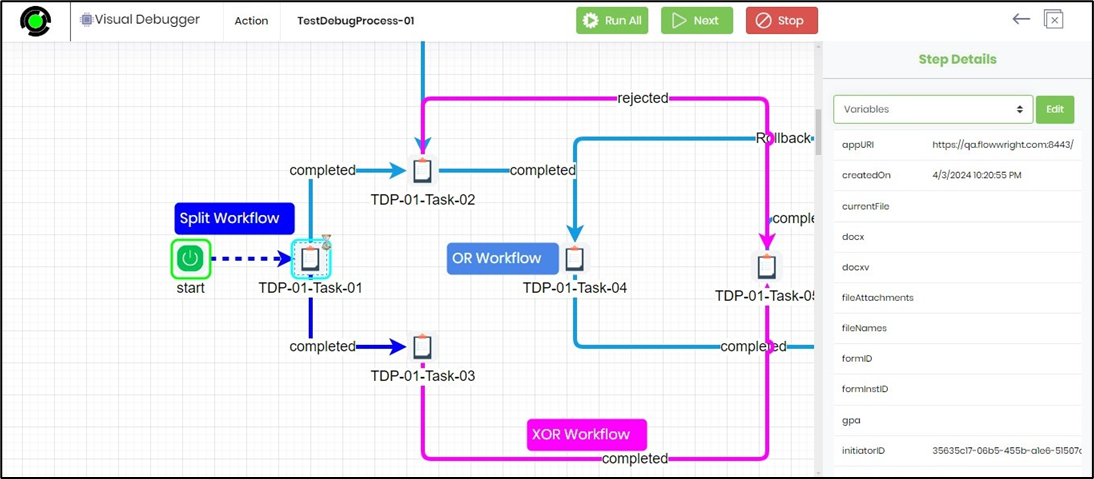
In the Step Details pane, select the dropdown menu to choose between Variables, Globals, Properties, or Execution Info, as shown below.
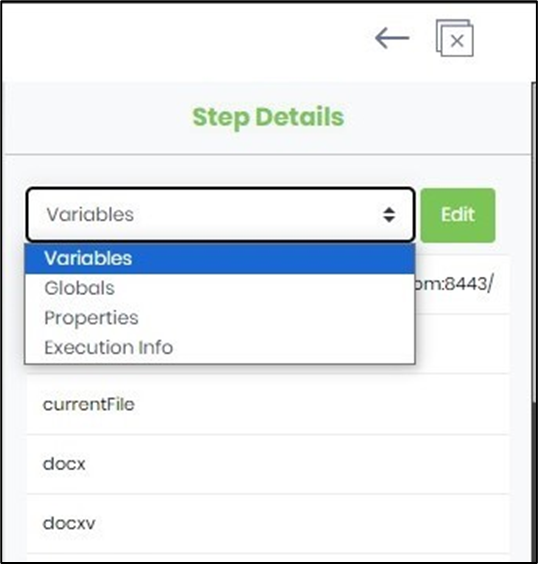
Select Variables and click the Edit button. You can update the variable values during runtime, as shown below. Similarly, the values for Globals and Properties can also be modified at runtime.
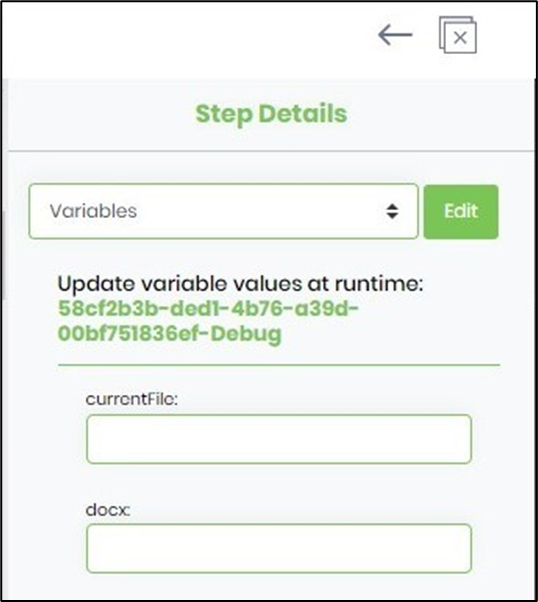
The Execution Info from the dropdown list shows the current step details such as name, type, ID, status, return value, start and end date and time of the execution, execution ID, and the time taken for execution to complete in milliseconds, as shown below.
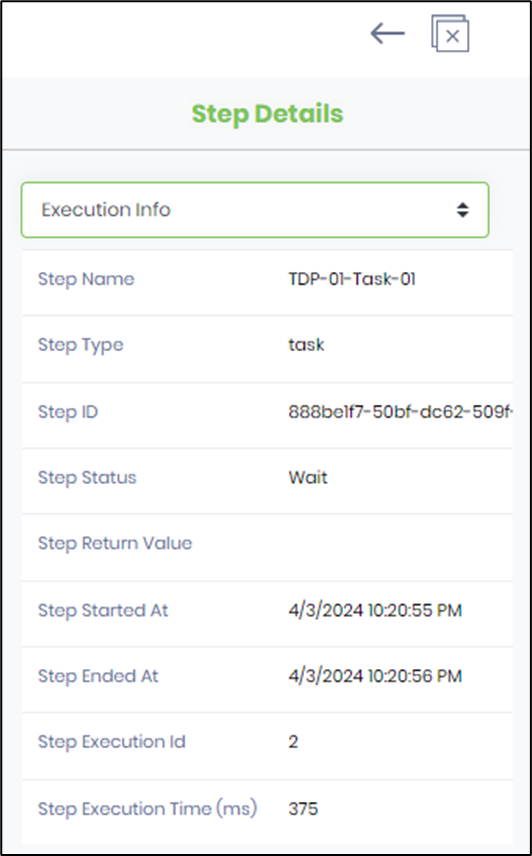
Click anywhere on the debugger canvas to view the Diagram information in the right pane, as shown below. You can switch between Grid and Page View formats by selecting the checkbox. Adjust the font size using the dropdown list. Change the paper size and workflow orientation to match the display size when rendered. Select the Outline checkbox to quickly navigate a large workflow by moving and holding down the blue box across the workflow schematic design.

How do you navigate through the Visual Debugger?
The Visual Debugger UI appears as shown below. The process workflow is displayed in the center, with a green rectangle highlighting the current step. Click the Next button to execute the current step. The navigation advances to the next step in the workflow, and an alert appears in the upper right corner, as shown below.
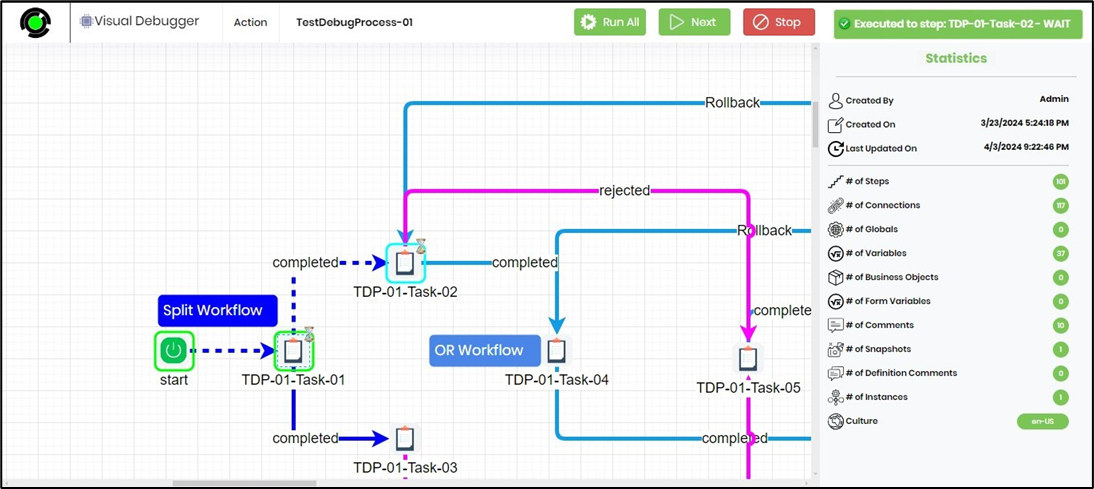
If the current step executed is a task step, the task information automatically opens in a new tab, as shown below. You can simply provide the necessary details in the UI and choose to complete, reject, or reassign the task.

Upon task completion, the Visual Debugger moves to the next step in the sequence.

This approach helps you fully understand the workflow's intended process and expected results, which will assist in spotting deviations from the expected behavior.
Suppose you need to identify the particular issue or problem that requires debugging. This could involve unexpected behavior, errors, or failures in the workflow. You must reproduce the problem reliably. This step is essential because diagnosing and fixing the issue can be more difficult if you can't reproduce it consistently.
Select the suspected process step on the Visual Debugger canvas and right-click to see the options below. Choose either "Reset to step" or "Run from step."
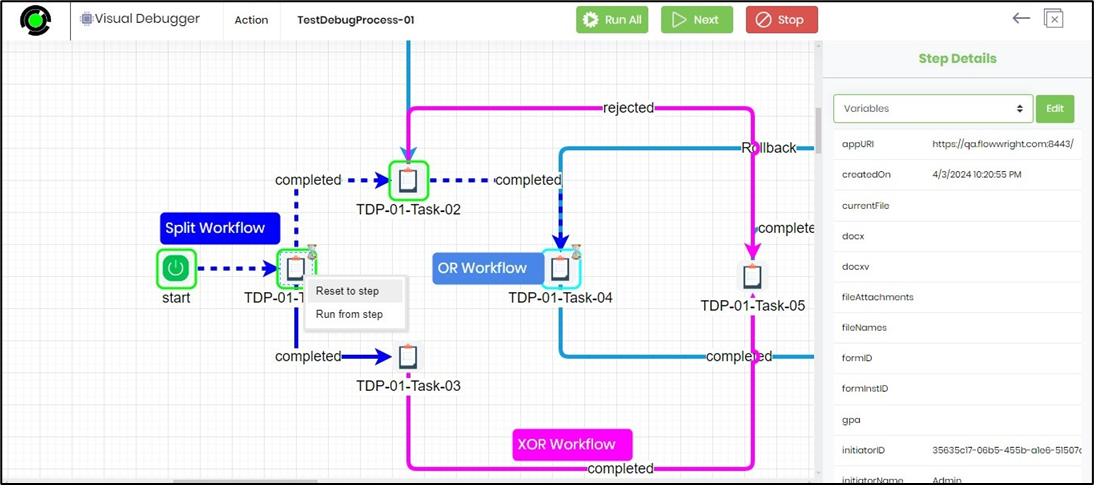
The debugger will route the process execution accordingly, and an alert notification will appear in the upper right corner, as shown below.
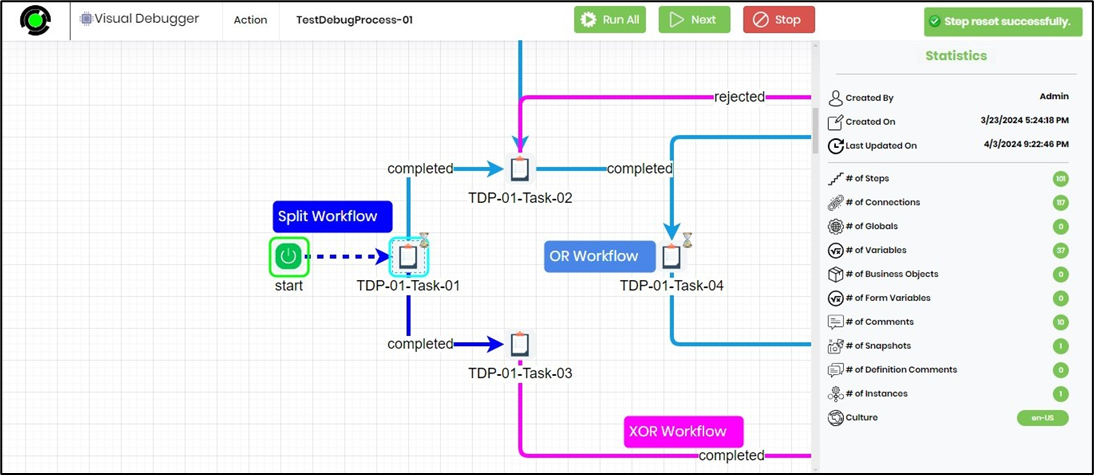
Let's say you need to add a breakpoint farther ahead. Select the process step on the Visual Debugger canvas and right-click to see the options below. Use this method to add one or multiple breakpoints.
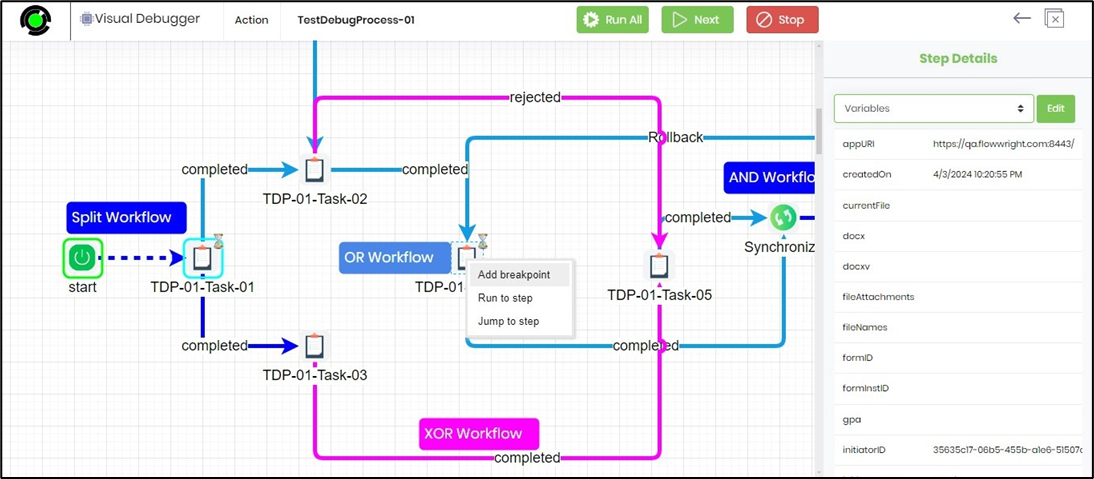
You now identify the breakpoints with a red dot. Click on the Run All button. The debugger will run all process steps up to this breakpoint. Any tasks or forms that require human intervention will appear on new pages, which can be completed during execution.
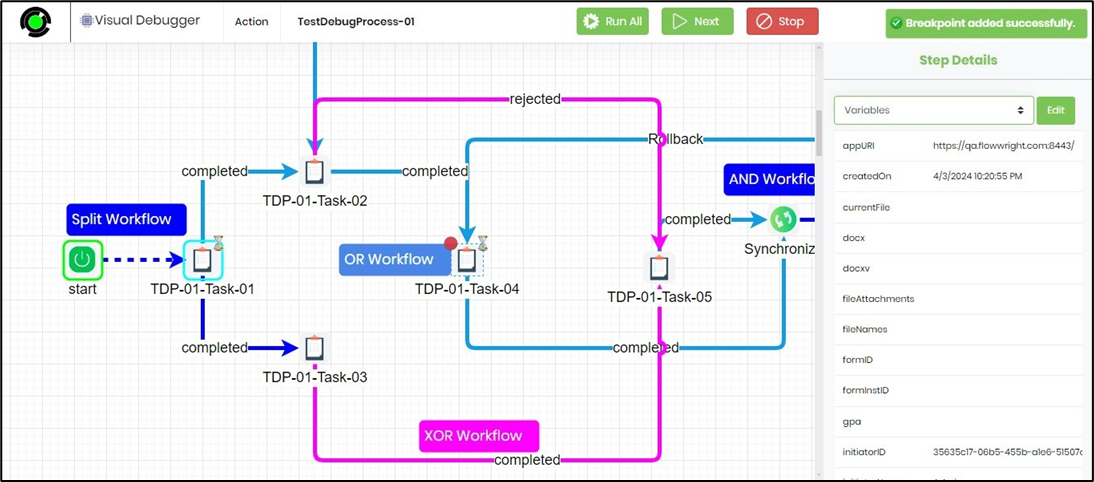
Let's say you need to identify the problem. You might want the debugger process to narrow down the scope of the issue to find the root cause. This could involve systematically disabling or isolating parts of the workflow to determine which component is responsible. You can use a combination of breakpoints, run-to-step, or jump-to-step options.
Select Action - Clear all breakpoints to speed up debugging or set new ones.
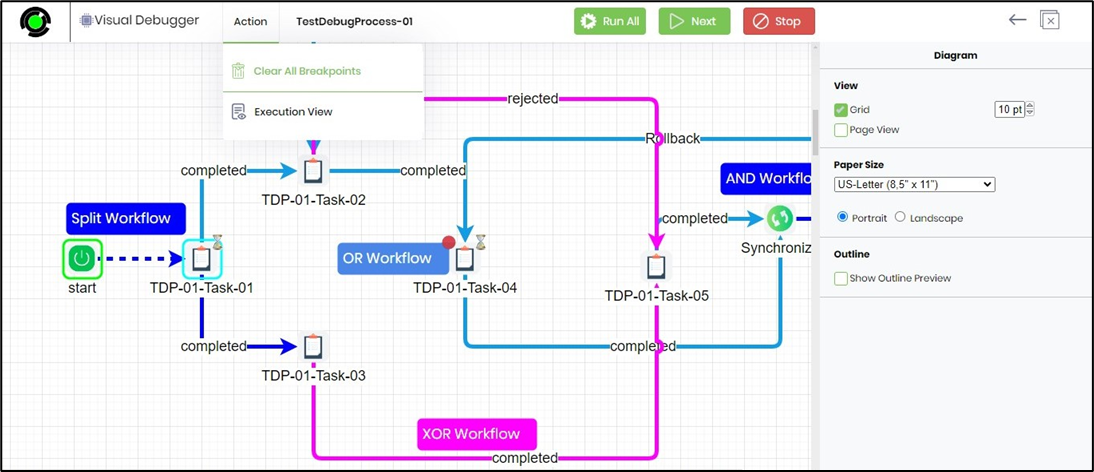
Select the process step on the Visual Debugger canvas and right-click to view the options below. Choose either 'Run to step' or 'Jump to step'. The debugger will then perform the chosen action.
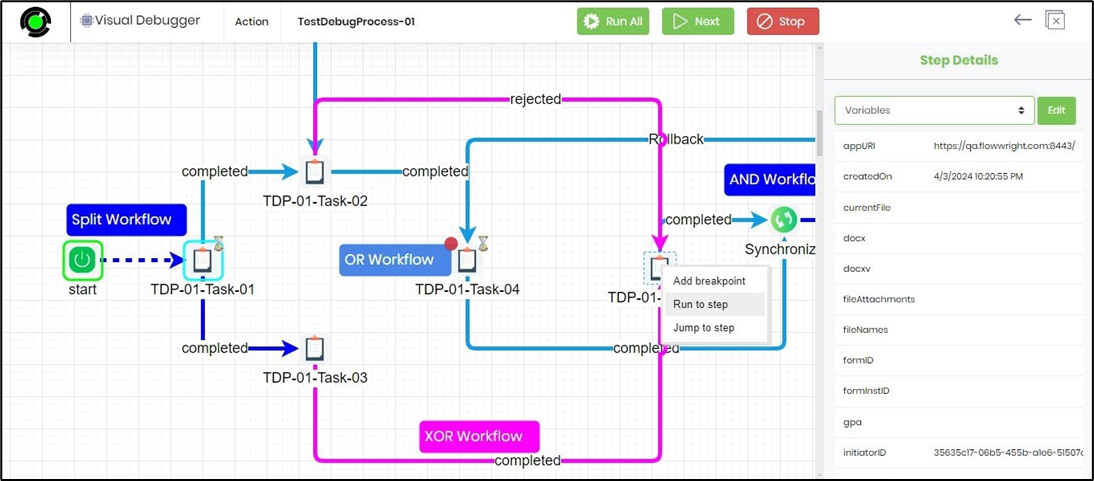
The Jump to step advances the process execution, as shown below. Click the Next button. The debugger will run and proceed from this step.
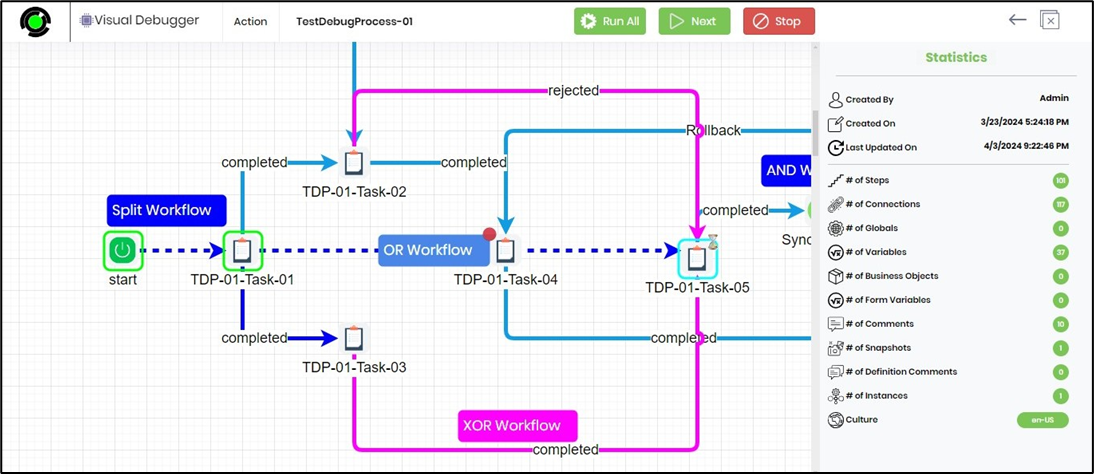
Use the Action—Execution View menu option to understand the process execution up to the current step. This feature is helpful when multiple jump-to-step actions are performed during debugging.
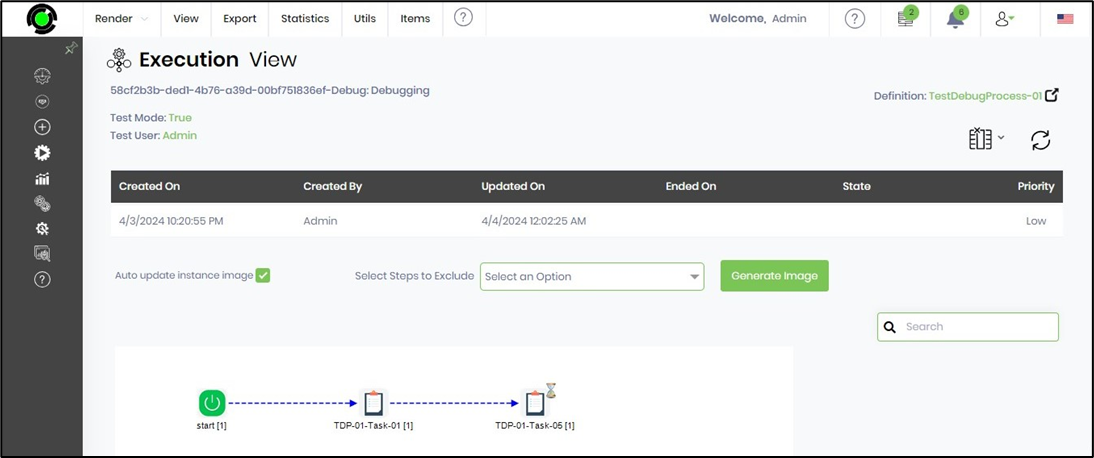
How do you stop the debugging process?
Click the Stop button during debugging. An alert will appear in the upper right corner. Click OK in the popup to confirm, as shown below.
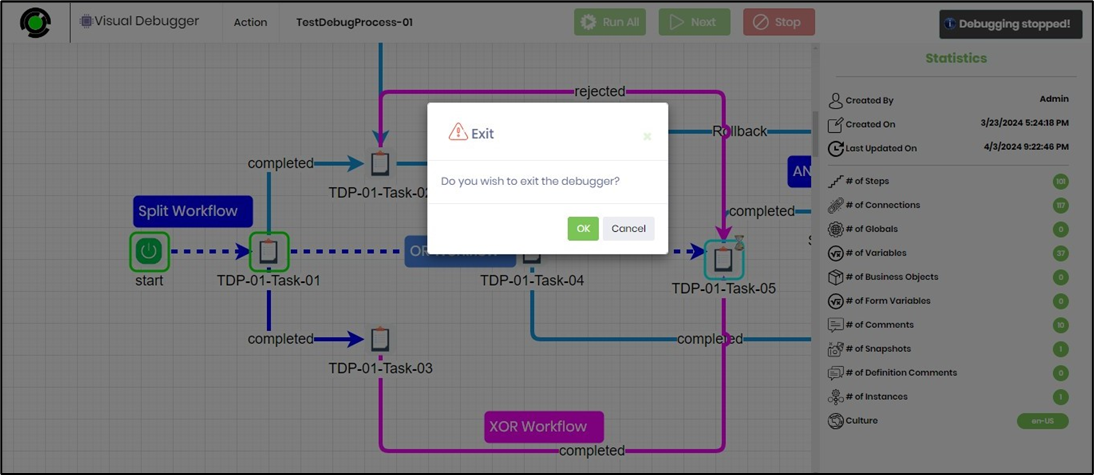
The debug process has stopped, and the process instance status changes to DebugEnded, as shown below.

How do you Visually Debug A Form Process?
You can watch the video here for more information.